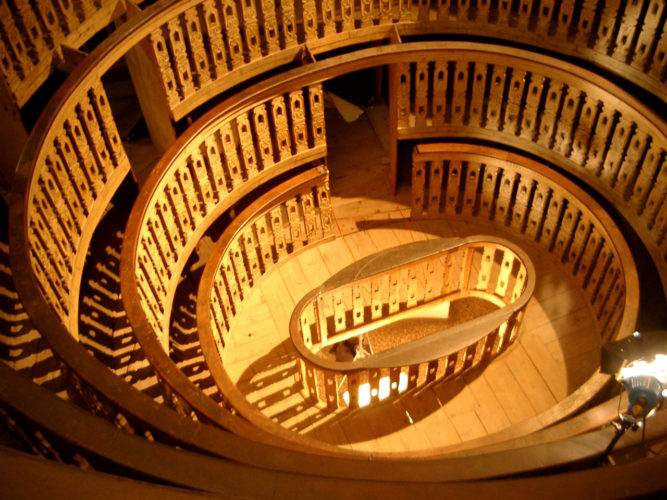The presence of well-dressed spectators in the previous image also indicates that attendance at anatomical dissections was not only a source of moral edification, but also a form of fashionable entertainment in this period, akin to going to the theatre.
This overlap between anatomy and drama is reflected in the design of the first purpose-built spaces for anatomical dissection. The anatomy theatre at Leiden was built in 1596 by the chair of anatomy Pieter Pauw, and modelled on the first permanent anatomy theatre (1594) at the University of Padua, where Pauw had studied. The arrangement of the seating in tiered circles around the central space for demonstration drew on the architecture of Roman amphitheatres. Alessandro Benedetti, who had a temporary structure built in Padua for his anatomical demonstrations at the turn of the sixteenth century, described it as a theatre (theatrum), and explicitly advised that such buildings should be based on the classical amphitheatres at Rome and Verona (Historia corporis humani sive anatomice, 1502). Benedetti’s descriptions of eager crowds of spectators, who must pay a fee for the privilege of attending, further evoke the theatrical nature of these displays. Padua’s later permanent anatomy theatre, pictured here, survives to this day.











